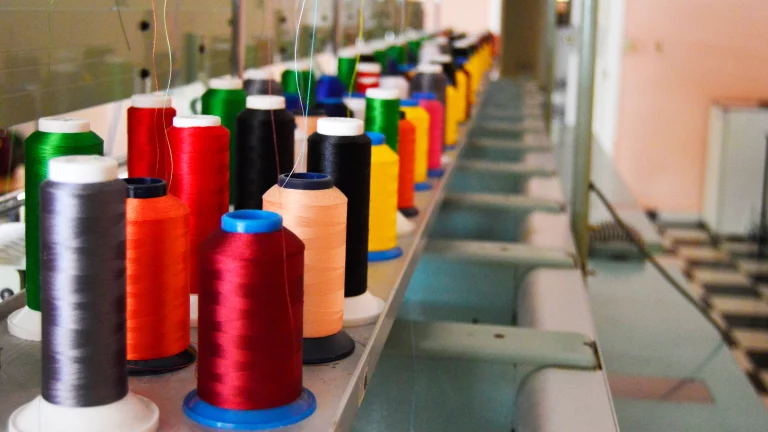As sustainability rises to the top of the fashion industry’s agenda, the question of how fashion companies will transform to achieve a sustainable operating model becomes pivotal. Progress to date falls short—and winning in the next decades will require disruptive innovation in the form of new materials, processes, technologies, and business models. Although an expanding innovation pipeline has emerged, only a fraction of all available capital reaches fashion and textile tech, leaving many innovators stuck in the financing gap, unable to advance their solutions to market.
To bring the necessary innovations to scale, fashion brands, supply chain partners, investors, and others need to step up to create the conditions that accelerate innovation. Financing will flow into the fashion space when investors are presented with manageable risk, attractive returns, and measurable impact. With its $2 trillion market size, the fashion industry offers major untapped opportunities for investors and companies. BCG and Fashion for Good calculate a financing opportunity of $20 billion to $30 billion per year to be directed toward developing and scaling the disruptive innovations and business models needed to achieve a step change in sustainability by 2030.
Strong Innovation, Emerging Support
The robust but still-emerging pipeline of innovations requires industry support and financing to advance from development to full commercial scale. Soft-tech solutions such as digital platforms have attracted more financing than relatively asset-intensive forms of hard tech, such as new raw materials and end-of-use technologies, where more than half the financing opportunity is concentrated. Hard-tech solutions are essential to the industry’s transformation and have special needs for support in order to advance to commercialization.
Hard-tech solutions are essential to the industry’s transformation and have special support needs to advance to commercialization.
For all innovations, but especially in hard tech, two phases in the innovation development process pose the greatest challenges for innovators on the path to commercialization. First, innovators struggle to secure financing to develop a minimum viable product. Second, during the commercialization phase, they struggle to raise the larger financing rounds needed to reach commercial production volume. This type of capital is especially difficult to raise in the fashion industry’s still-nascent financing landscape, where growth equity, project financing, lending vehicles, and R&D investments from large corporations are not yet prevalent. A broader range of investors and lenders is needed to support innovation: VC alone will not be enough to finance the transformation.
Six Barriers to Financing Innovation
Six key barriers stand in the way of financing for sustainable fashion innovation and impede the industry’s progress toward innovation and transformation.
Misaligned Incentives. Although brands have the greatest incentive and the most pressure to drive toward sustainability, manufacturers must account for the costs and implementation risks, which results in a misalignment of incentives for major innovation along the supply chain.
Limited Awareness of the Opportunity. The demand for innovation in the fashion industry has accelerated only recently, so private, public, and philanthropic investors have had limited exposure to the size and scale of the untapped opportunity in the coming industry transformation.
Absence of a Structured Innovation Process and Orchestration. Unlike other tech-driven industries, fashion lacks clear stage gates, standardized processes, and commercialization paths for investors. The absence of these structures causes greater uncertainty and misjudgment of risk, which deters investment.
Lack of Experience and Technical Expertise. Many brands and investors lack experience in and technical knowledge of the science or manufacturing techniques that underlie innovations. Such expertise is essential to supporting, scaling, and investing in innovation.
Expertise in the science that underlies innovations is essential to supporting, scaling, and investing in innovation.
Incorrect Perceptions Regarding Pricing and Externalities. Competing with the commoditized prices of existing solutions is a challenge for innovations. Companies benchmark against current costs and often fail to account for rising prices and externalities such as carbon emissions when assessing business cases.
Inadequately Structured Exclusivity. Especially in competitive areas, brands often seek exclusive contracts to secure access to emerging innovations. While this provides the benefits of focused support from a committed brand, it can also block innovators from broader scaling and rapid commercialization.
A Call to Action for All Stakeholders
Financing will flow into the fashion space if all stakeholders build toward conditions that promote manageable risk, attractive returns, and measurable impact. No single stakeholder operating on its own can provide all of the capabilities and factors needed to scale innovation, so the fashion industry, investors, and financial institutions must join forces.
Orchestrators—Targeted Consortiums and a Structured Innovation Process. Multistakeholder organizations must drive collaboration and create a streamlined ecosystem for innovation. In addition, the industry needs bespoke consortiums of brands, supply chain partners, innovators, and investors with a shared technology focus to concentrate resources and de-risk investments.
Brands—Stronger Advocacy and Hands-On Support. To de-risk investments, brands must clearly signal their demand for technologies to investors. In addition, brands win by helping their preferred innovators develop through offtake agreements, pilot projects, and direct investment.
Supply Chain Partners—Increased Engagement and Ownership. Supply chain partners have a natural stake in innovation, and they benefit from strategic partnerships with innovators in which they can offer expertise, access to equipment, capital, and, ultimately, an exit for the startup through acquisition.
Innovators—Focused Use Cases and Practical Implementation Plans. Innovators should approach customers and investors with efficiency-driven use cases, more realistic implementation plans for commercializing their solutions, and strong teams with a balance of technical and business skills.
Investors and Funders—Mobilizing More Investment and New Types of Capital. Investors must advance their industry expertise and join forces with brands, supply chain partners, and innovators to develop investment propositions that match their risk-return profiles. In addition, new sources and vehicles of investment—such as blended finance combining public capital with private or philanthropic capital—need to enter the space.
Public Sector—Strengthening Policy Framework and Mechanisms to Catalyze Private Investment. Although regulatory action has begun to influence the industry’s move toward sustainability, more is needed to provide a framework of policies and incentives that will drive systemic change. The public sector must increase its direct investments and support to catalyze investment from the private and philanthropic sectors.
The public sector must increase its direct investments to catalyze private and philanthropic investment.
The Imperative for Collaborative and Decisive Action
Indisputably, the fashion industry must accelerate its transformation to sustainable, circular practices. The clock is ticking, and success depends heavily on the development of new, disruptive solutions that will future-proof the industry. The growing innovation pipeline proves that such solutions can be found, but the pace of development is too slow, and the most significant innovations needed are not yet available at scale. Too many innovators still fall victim to the financing gap, in which they fail to receive the support they need from brands, investors, supply chain partners, philanthropy, and regulators.
A perfect storm of innovation and opportunity is forming in fashion—companies and investors that can capitalize on sustainability and impact-driven innovation will transform the industry and ultimately win.






